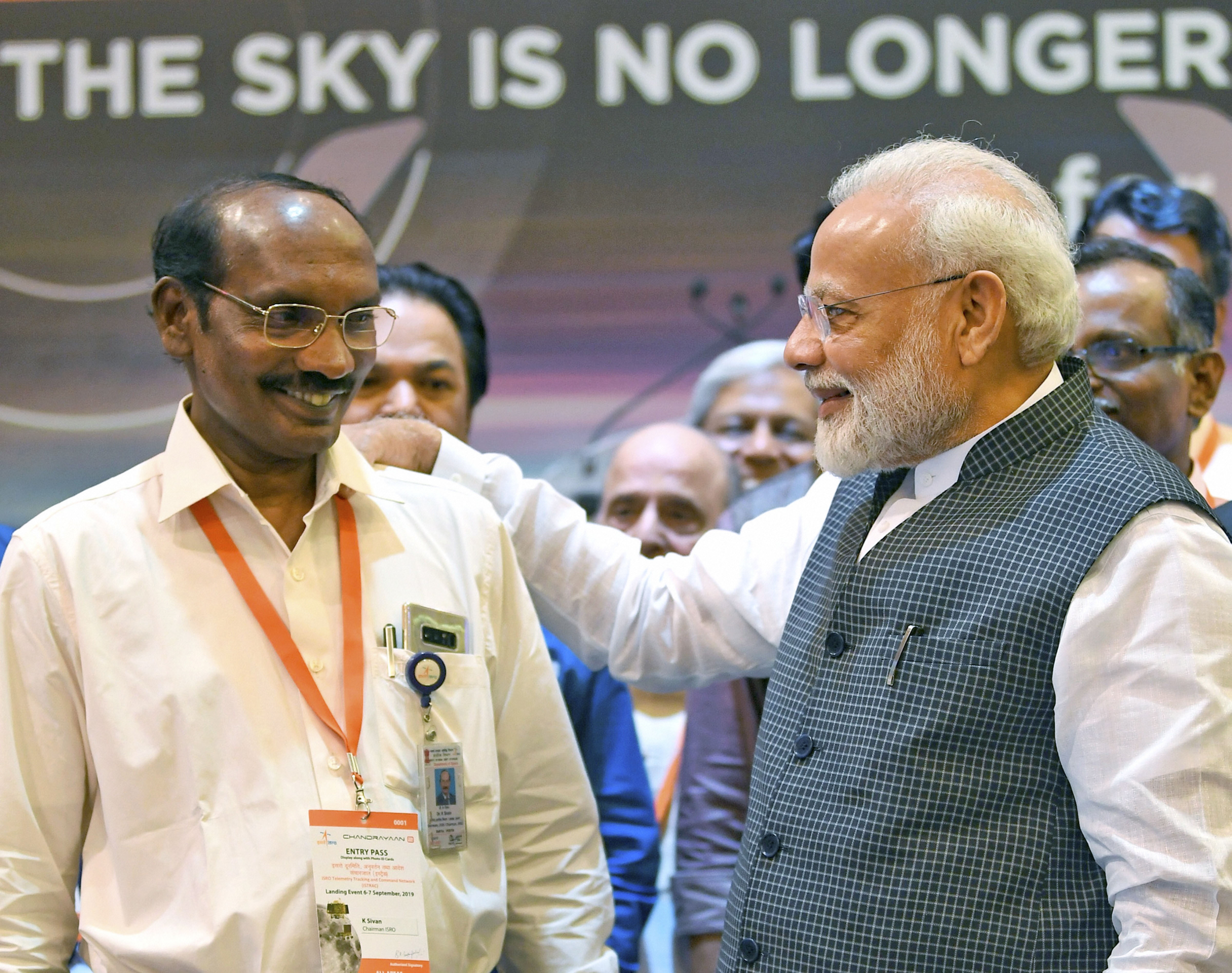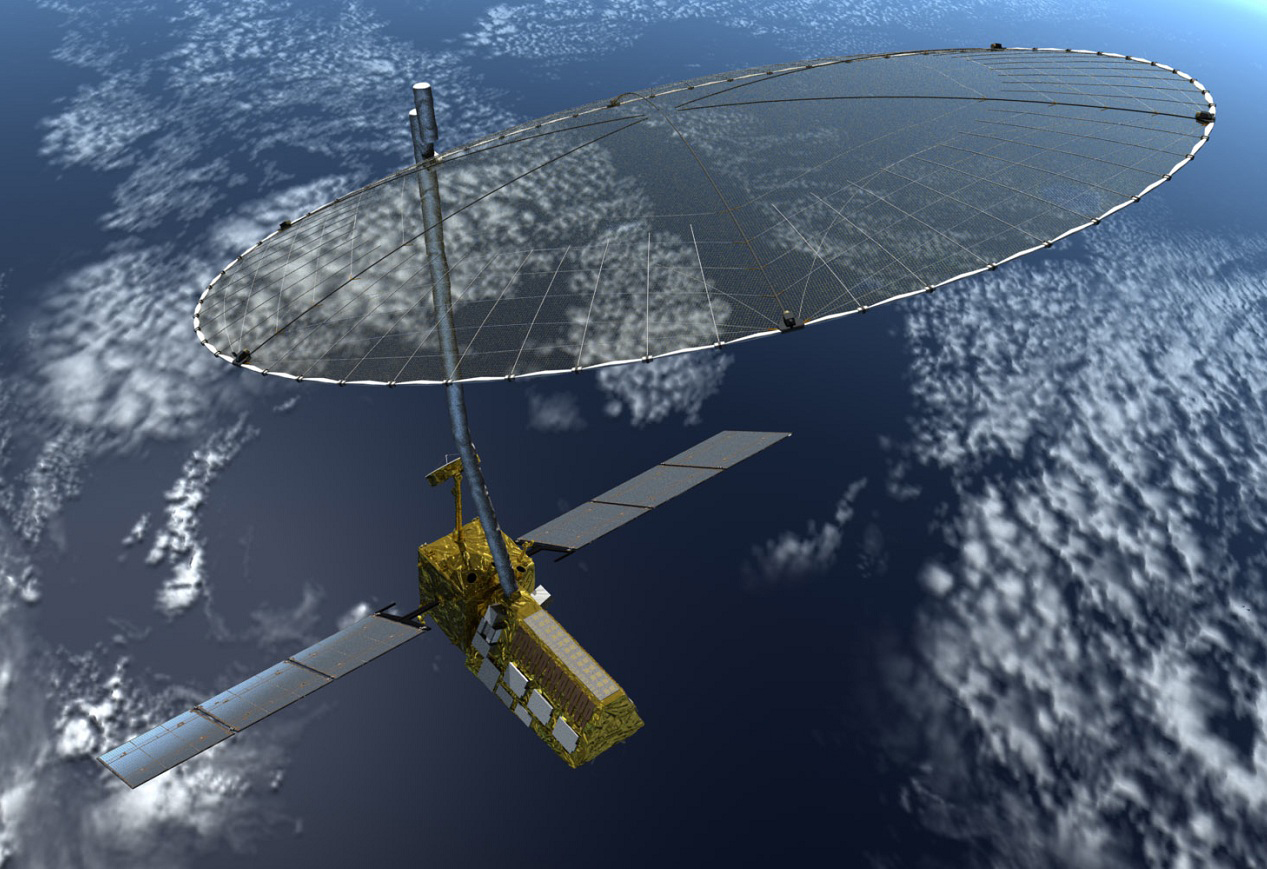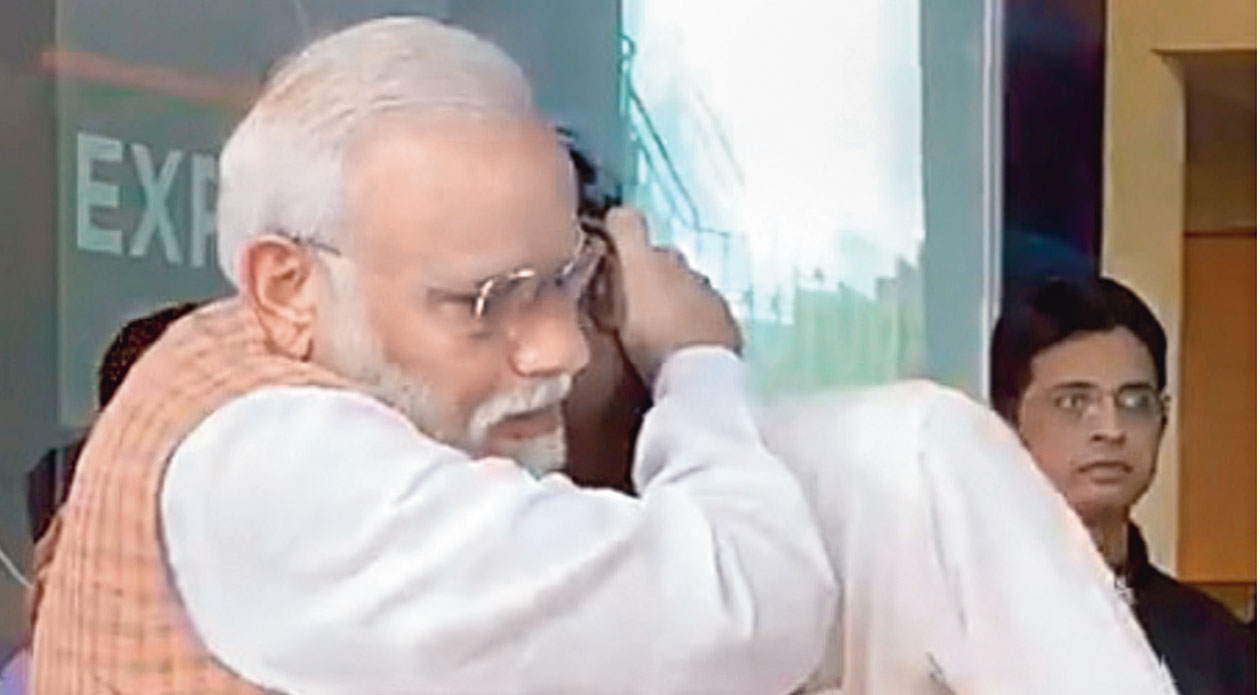Chandrayaan-2's Vikram module has been located on the lunar surface and it must have been a hard landing, Isro chairman K. Sivan said on Sunday, in an admission that the planned soft landing was not successful.
'Yes, we have located the lander on the lunar surface. It must have been a hard landing,' Sivan told PTI.
He said the lander rover, Pragyan, housed inside it, was located by the on-board cameras of the Chandrayaan-2 orbiter.
Asked if the lander was damaged during the hard landing, he said that they did not know.
Sivan said efforts to establish contact with the lander were continuing.
India's mission to soft-land on moon suffered a setback during the wee hours on Saturday with 'Vikram' module losing communication with ground stations, just 2.1 km from the lunar surface during its final descent.
During the most complex stage of the country's second expedition to the moon, the lander was on a powered decent for a soft landing when it lost communication.
'The Vikram lander's descent was planned and normal performance was observed up to an altitude of 2.1 km. Subsequently, communication from the lander to ground stations was lost,' Sivan said.
'The data is being analysed,' he added at the Mission Operations Complex at Isro Telemetry, Tracking and Command Network, Bengaluru.
The successful landing would have made India the fourth country after erstwhile USSR, the US and China to achieve a soft-landing on the moon and also the first to launch a mission to the unexplored south pole of the Moon.
The Chandrayaan-2 orbiter is healthy and safe in the lunar orbit, an Isro official said after the lander lost contact with ground stations minutes before the touchdown on moon's surface.
The mission life of the 2,379-kg orbiter is one year. The orbiter payloads would conduct remote-sensing observations from a 100-km orbit.
Chandrayaan-2, a follow-on mission to the Chandrayaan-1 mission undertaken more than a decade ago, comprises an orbiter, a lander (Vikram) and a rover (Pragyan).
The orbiter carries eight scientific payloads for mapping the lunar surface and study the exosphere (outer atmosphere) of the moon.
ISRO on September 2 successfully carried out the separation of Vikram (with rover Pragyan housed inside) from the Chandrayaan-2 orbiter.
The Vikram module, which was supposed to carry out various tests on the lunar soil, had completed the rough braking phase as planned and entered the phase of fine braking at an altitude of 2.1 km, when it lost communication.
'Vikram', named after Dr Vikram A. Sarabhai, the father of the Indian Space Programme, was designed to execute a soft landing on the lunar surface, and to function for one lunar day, which is equivalent to about 14 earth days.
The rover was to roll down from the lander and explore the surrounding lunar terrain, a few hours after the planned soft-landing.
Chandrayaan-2 is a Rs 978-crore unmanned moon mission. India's Geosynchronous Satellite Launch Vehicle, GSLV MkIII-M1 successfully launched the 3,840-kg Chandrayaan-2 spacecraft into the earth's orbit on July 22.
The spacecraft began its journey towards the moon, leaving the earth's orbit in the dark hours on August 14, after a crucial manoeuvre called Trans Lunar Insertion that was carried out by ISRO to place the spacecraft on 'Lunar Transfer Trajectory.'
The spacecraft successfully entered the lunar orbit on August 20 by performing Lunar Orbit Insertion (LOI) manoeuvre.
On September 2, Vikram successfully separated from the orbiter, following which two de-orbiting manoeuvre were performed to bring the lander closer to the moon.













